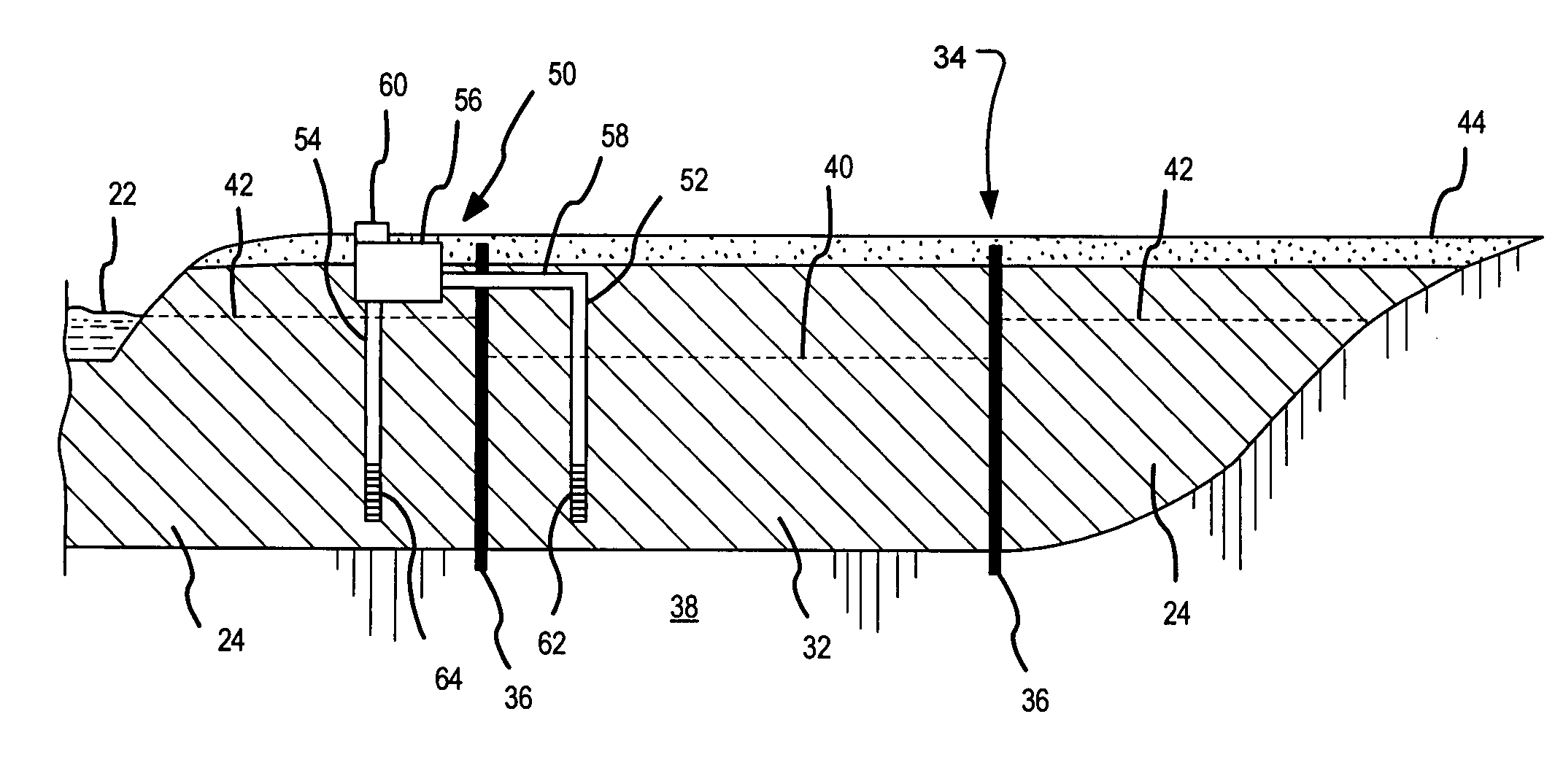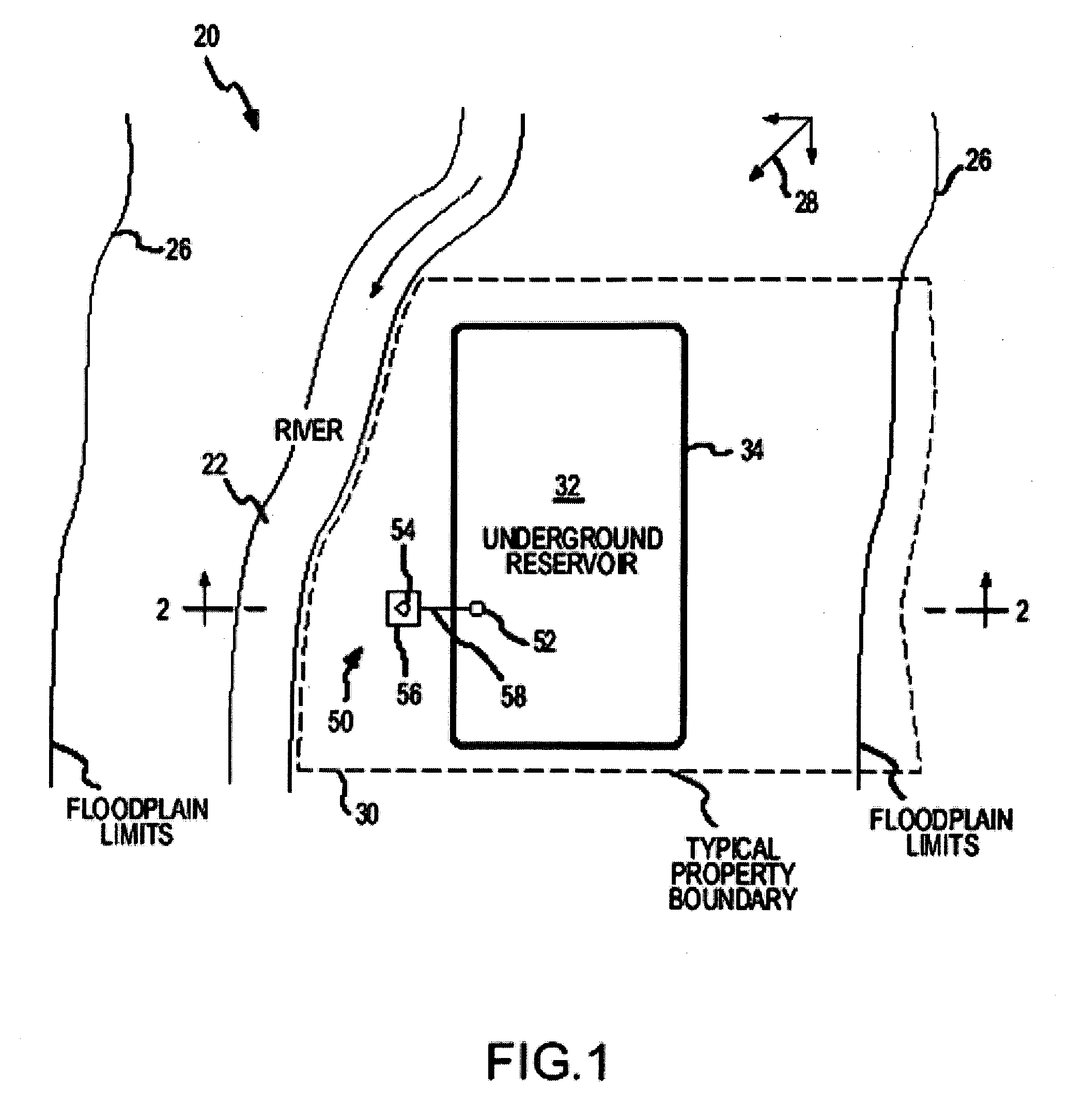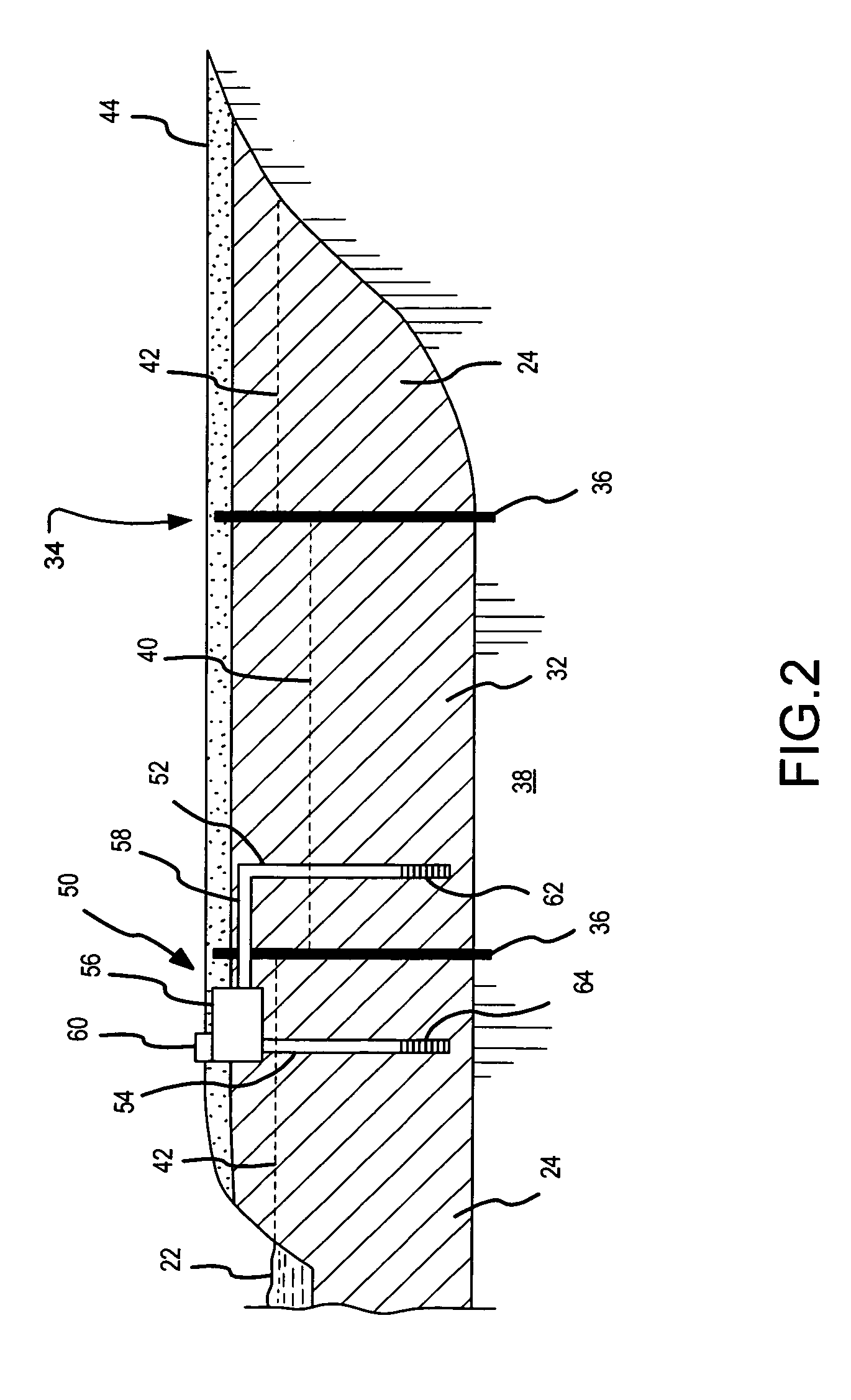Direct recharge injection of underground water reservoirs
a technology of underground water reservoirs and direct injection, which is applied in the direction of mechanical equipment, transportation and packaging, service pipe systems, etc., can solve the problems of increasing the difficulty of building conventional open reservoirs for the storage of water, severely curtailing the flow of water downstream, and becoming prohibitively difficult to form an open reservoir in this manner. , to achieve the effect of effectively discharging water and reducing temperature impacts
- Summary
- Abstract
- Description
- Claims
- Application Information
AI Technical Summary
Benefits of technology
Problems solved by technology
Method used
Image
Examples
Embodiment Construction
[0023] Embodiments of the present invention include underground porosity reservoir systems and methods that minimize impact to surface uses while also improving the quality of water drawn from surface water bodies for storage in the underground reservoirs. Embodiments also include underground porosity reservoir systems and methods that reduce the impact on surface water bodies due to the discharge of stored water.
[0024]FIGS. 1 and 2 illustrate an exemplary underground reservoir system in accordance with the present invention. FIG. 1 illustrates a plan view of an exemplary river system or basin 20 comprising a riverbed 22 that flows along the top of alluvial deposits 24 (FIG. 2), e.g., sand and gravel, formed within the boundary 26 of a floodplain that extends to either side of the current riverbed 22. An arrow 28 in FIG. 1 illustrates a direction of flow of the groundwater through the alluvial deposits 24. A dashed line 30 further illustrates a typical property line of a parcel of ...
PUM
 Login to View More
Login to View More Abstract
Description
Claims
Application Information
 Login to View More
Login to View More - R&D
- Intellectual Property
- Life Sciences
- Materials
- Tech Scout
- Unparalleled Data Quality
- Higher Quality Content
- 60% Fewer Hallucinations
Browse by: Latest US Patents, China's latest patents, Technical Efficacy Thesaurus, Application Domain, Technology Topic, Popular Technical Reports.
© 2025 PatSnap. All rights reserved.Legal|Privacy policy|Modern Slavery Act Transparency Statement|Sitemap|About US| Contact US: help@patsnap.com



